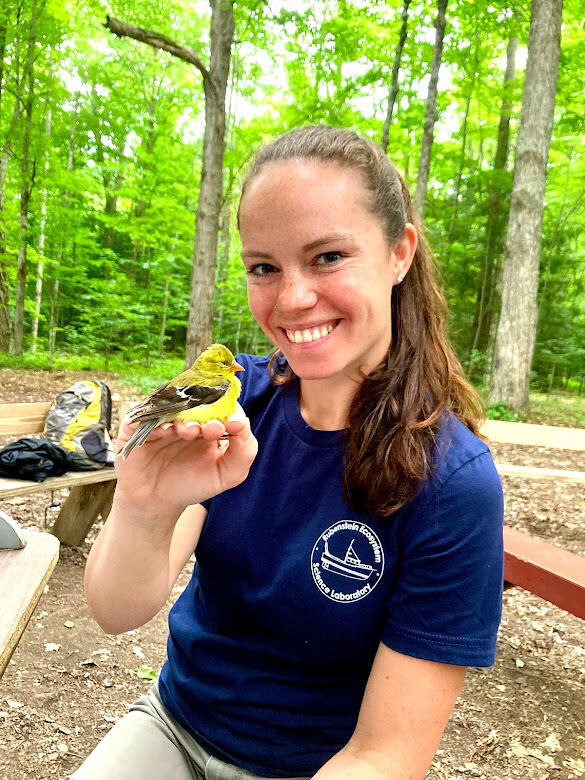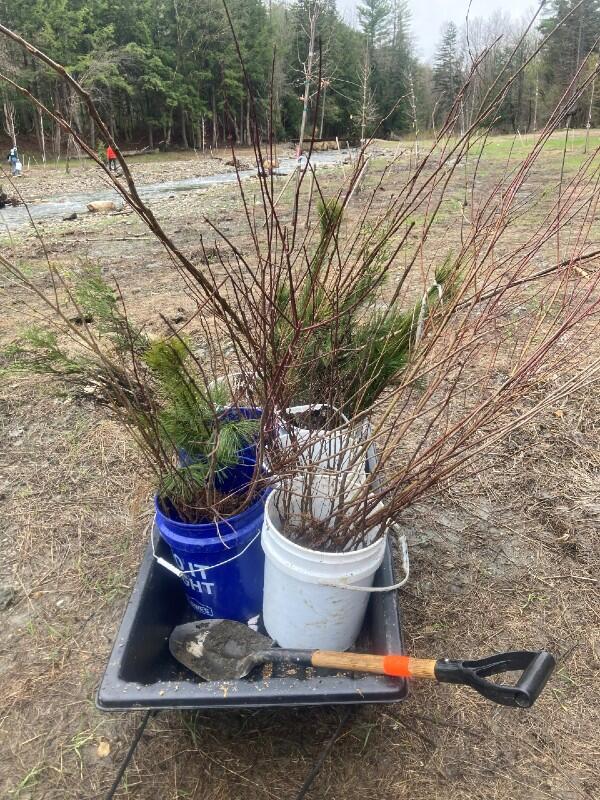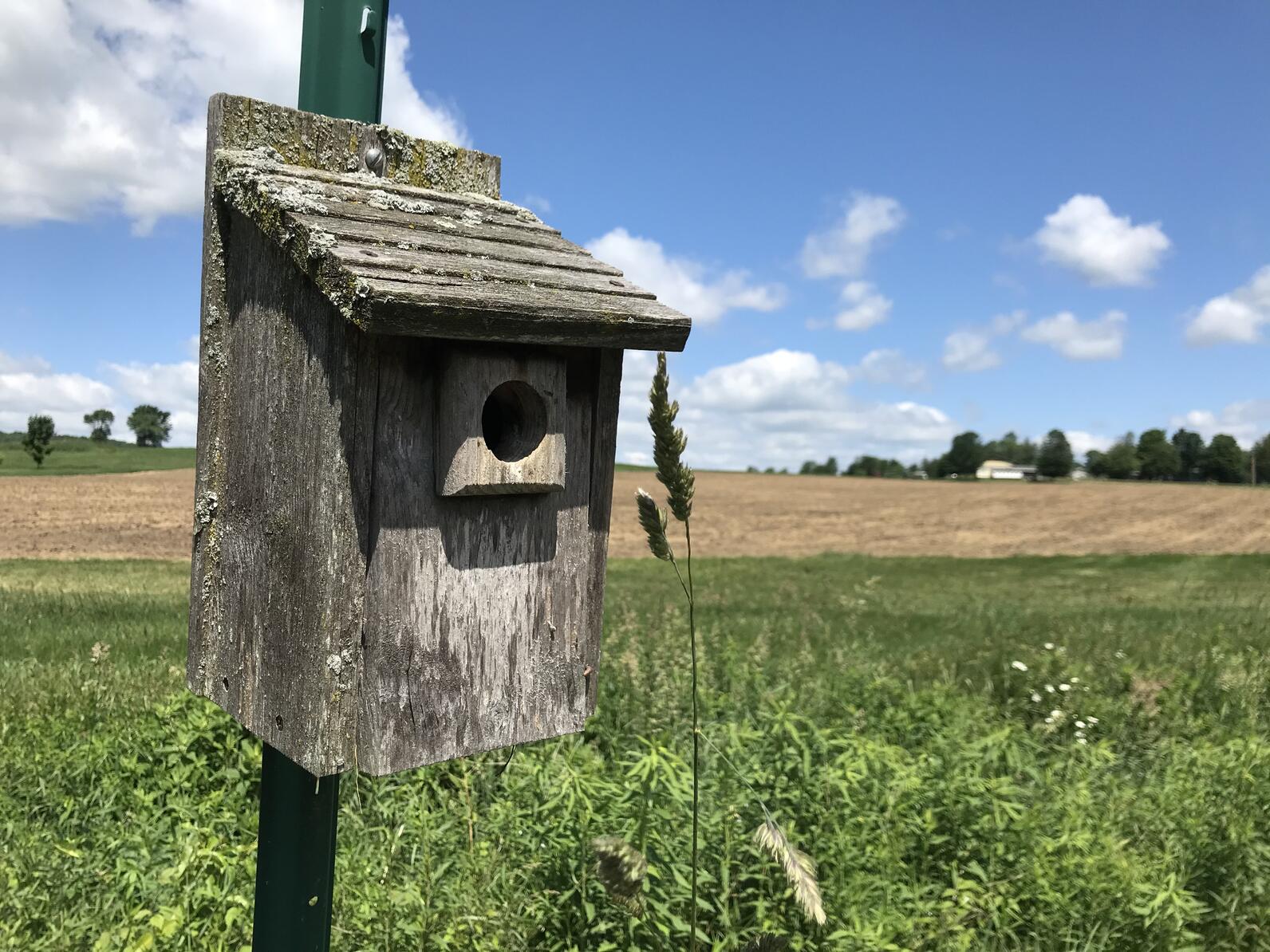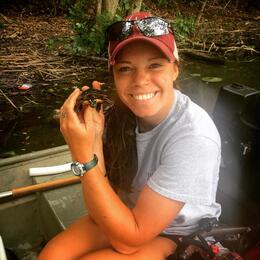As the ground thawed and streams began to trickle again this past spring, neotropical migratory birds arrived in waves, bees emerged from their winter dormancy, and suddenly the field season was a full docket of surveys, riparian restoration plantings, meetings with landowners, and long-awaited in-person public education events. From May to August, I joined senior conservation biologists at Audubon Vermont on over 40 site visits for various projects. Some mornings were spent kayaking to monitor hard-to-reach waterfront Bald Eagle nests or counting Common Tern eggs on islands in northern Lake Champlain. Other mornings, we navigated Vermont’s Class 4 roads and hiked into remote areas, lugging spotting scopes poking out of the top of my backpack, to sit and stare at rock cliffs to get a glimpse or hear a screech from a breeding pair of Peregrine Falcons. The feeling of glee surveying grassland birds on farms enrolled in a cost-share program for delayed mowing is not yet lost on me, though I can’t admit that I miss the 3:30am alarms or the soaked-to-the-bone feeling from morning dew on tall grasses. Few projects I helped with seemed more characteristic of Vermont than Audubon’s Bird-Friendly Maple—a fascinating intersection of bird conservation, economics, and sustainable forestry.

Further still, a special satisfaction came from rolling up my sleeves, putting gloves on, and digging in the earth to plant trees for on-the-ground riparian restoration projects with the Vermont Land Trust, local conservation districts, and watershed non-profit groups like Friends of the Winooski. I also had my first attempt at public outreach and education for Sea Grant by teaching lake ecology, fish ID, and fishing techniques to counselors at Water Wanderings Summer Camp and giving Little Lake Lessons to bicyclists waiting for the ferry on the Lake Champlain causeway. It was the perfect opportunity to emphasize that our actions on the terrestrial landscape are intimately linked to conditions in our aquatic environment.

However, the majority of my time has been spent assessing conditions at farms and talking to landowners about what adjustments they can make to their operations to reduce erosion and nutrient runoff, support wildlife habitat, control the invasion of exotic plants, and encourage native plant diversity. In addition to agricultural intensification, the last several decades have experienced alarming population declines in many bird species, especially aerial insectivores, and important native pollinators like bumblebees have declined, with many species reaching threatened status and several species already extirpated in Vermont. A response to these trends has been to incorporate conservation enhancements into agricultural practices to benefit wildlife, water, and soil. Audubon Vermont and the Gund Institute at the University of Vermont have partnered to develop a Bird and Bee Friendly Farming Initiative that promotes the creation and improvement of on-farm habitat for birds and pollinators. The program focuses on enhancing areas out of production (i.e., field edges, hedgerows, and fallow fields), grasslands, forest patches, and riparian areas. Creating structurally heterogeneous hedgerows composed of native species, removing invasive plants, cultivating diverse crops, reducing tillage and pesticide use, and erecting wildlife structures can increase the abundance and diversity of pollinator and bird species that in turn provide important on-farm services, such as crop pollination and pest control. Vegetation established for wildlife habitat in riparian zones can also co-benefit water quality by intercepting nutrient pollution from agricultural runoff, stabilizing stream banks on field edges, and mitigating flooding while simultaneously sequestering carbon. A riparian planting and shrubland management project at Nordic Farms this spring with the Vermont Land Trust and Audubon Vermont effectively demonstrates co-benefits of this work on bird habitat and clean water. At this initial stage in the program, we have recommended management plans for 15 Vermont farms, surveying for bird and pollinator species, suggesting native plant nurseries for stock purchase, and assisting with application for cost-sharing opportunities. Our work aims to support the long-term productivity of the land and financial sustainability of farm operations, and we plan to display our work on high-visibility demonstration sites and document the ecological and economic benefits of these practices.

Looking ahead, I’ve began targeting my focus for the next year and a half on bird and bee conservation planning at a couple of model farms at the Intervale Center in Burlington and Philo Ridge Farm in Charlotte who are interested in recommendations from the program. My goal is to sift through scientific literature and gather a consortium of resources for future farms to lean on and refer to. I also hope to hold some public workshops, present my findings at conferences, and publish reports to increase the level of impact these land management and conservation practices have. Energy and interest in Bird and Bee Friendly Farming has been gaining traction and that’s what I’m most excited about—seeing the momentum this project can pick up. We will continue to work on-the-ground with farmers to better understand their motives, interests, and abilities to incorporate conservation practices on their farms that are healthier for wildlife, soil, water, and climate.
This article was originally shared as part of the UVM Extension’s Watershed Forestry Partnership Fall Newsletter and reposted here.




